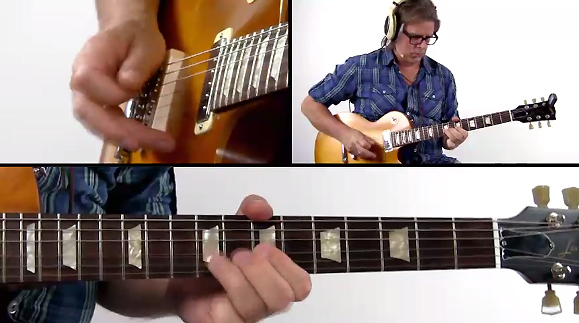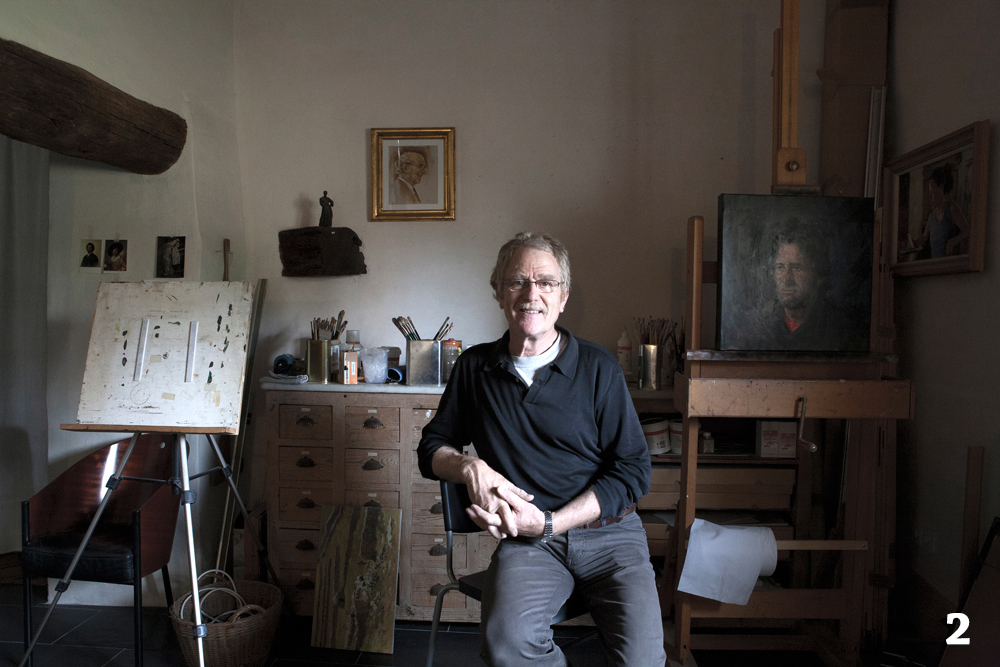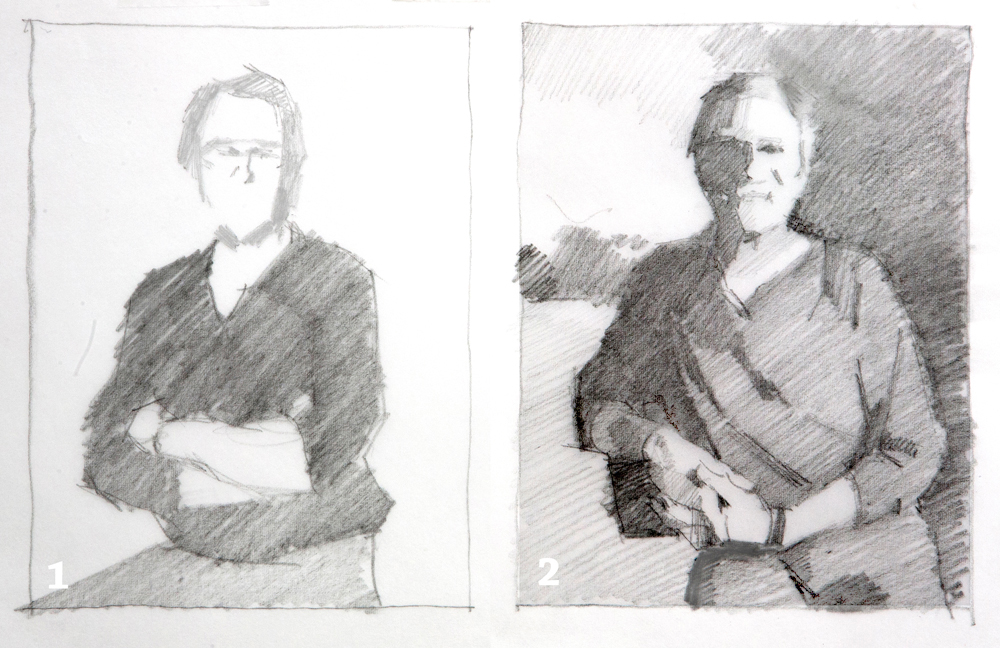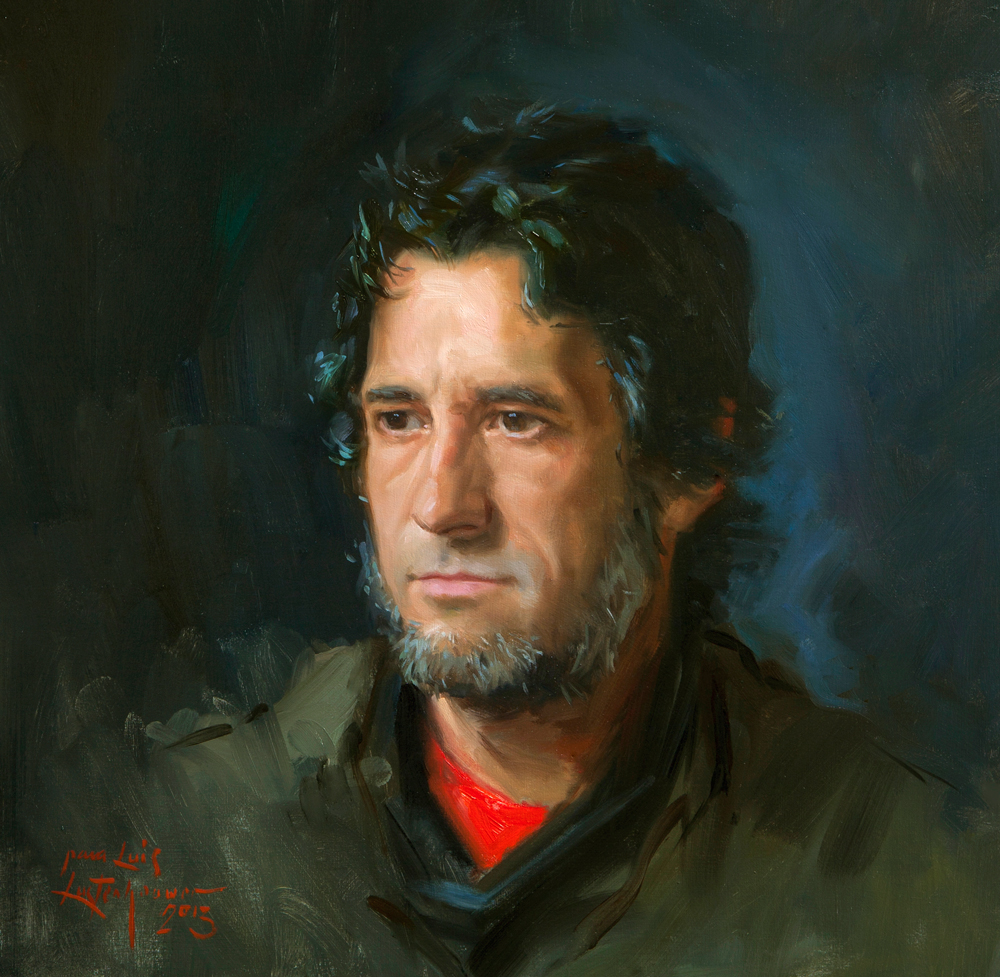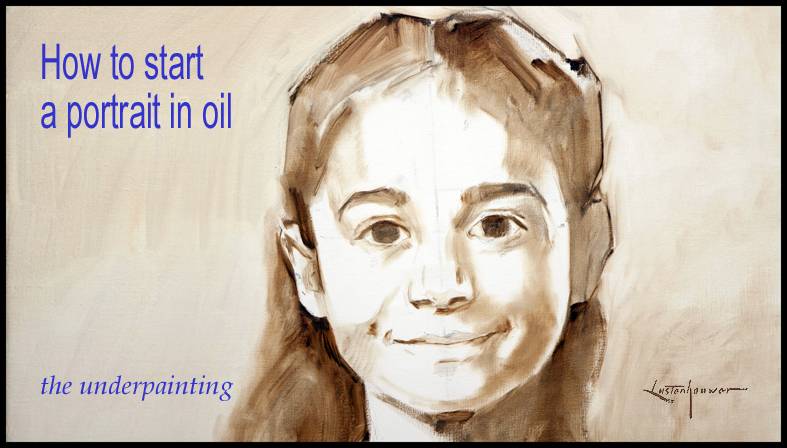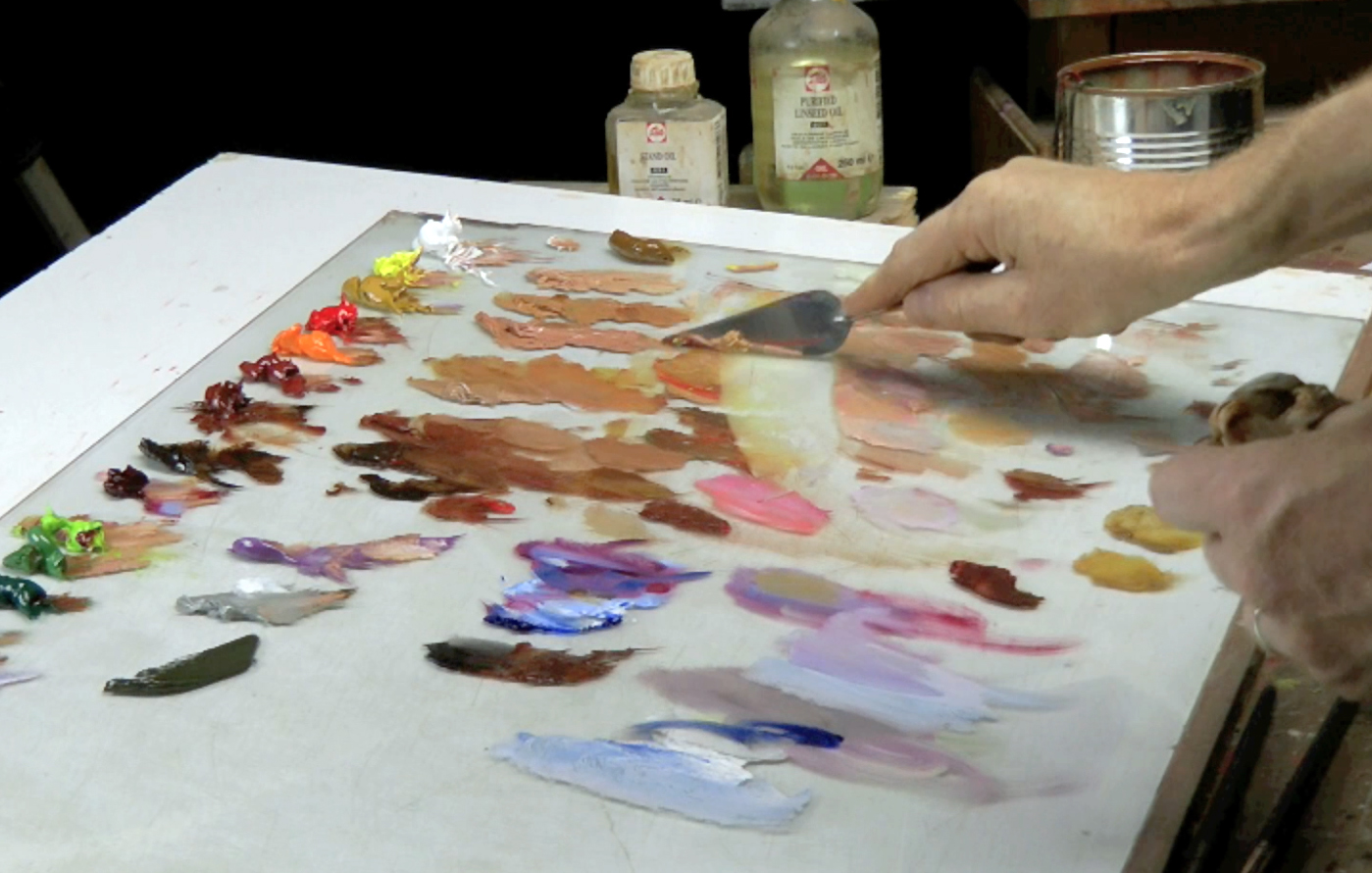Learn how to start a portrait in oil.
In this video demonstration I show how to start a portrait in oil paint, this time from observation, and based on photography.
I use high quality oil prepared canvas. In advance I applied two extra layers of oil painting primer. I made it off-white, adding a small amount of oil paint: ivory black and yellow ochre. Now, after two days, the surface is perfectly dry. For sketching I use charcoal because it is easy to erase. I love that material!
I start by drawing the vertical center line of the face which is a slightly inclined. Measuring with the compass, from the top to the chin I transfer the maximum length of the face. And from the bottom upward, I find the marker points of the lips, the nose, the eyes and the hairline. I make a horizontal centre line that intersects the center of the eyes, and mark the width of the face and the ears. After drawing the contours I complete the drawing with the features. I take the mirror and I see the drawing and the photograph at the same time. Mirrored I can judge more easy the entire proportion and the separate details. Try it yourself and you will never work without a mirror anymore!
When I am satisfied I make the underpainting in oils: raw umber. If the charcoal bothers me, I sweep it away with my finger. I did not fix the drawing, but of course you can do if you think it necessary. In the beginning I don´t use any medium. Later I block in the large areas with a bigger brush and I dilute the paint with citrus turpentine. And during the entire progress I keep checking the proportions.
After one or two days the underpainting is dry enough to start the real oil painting.
